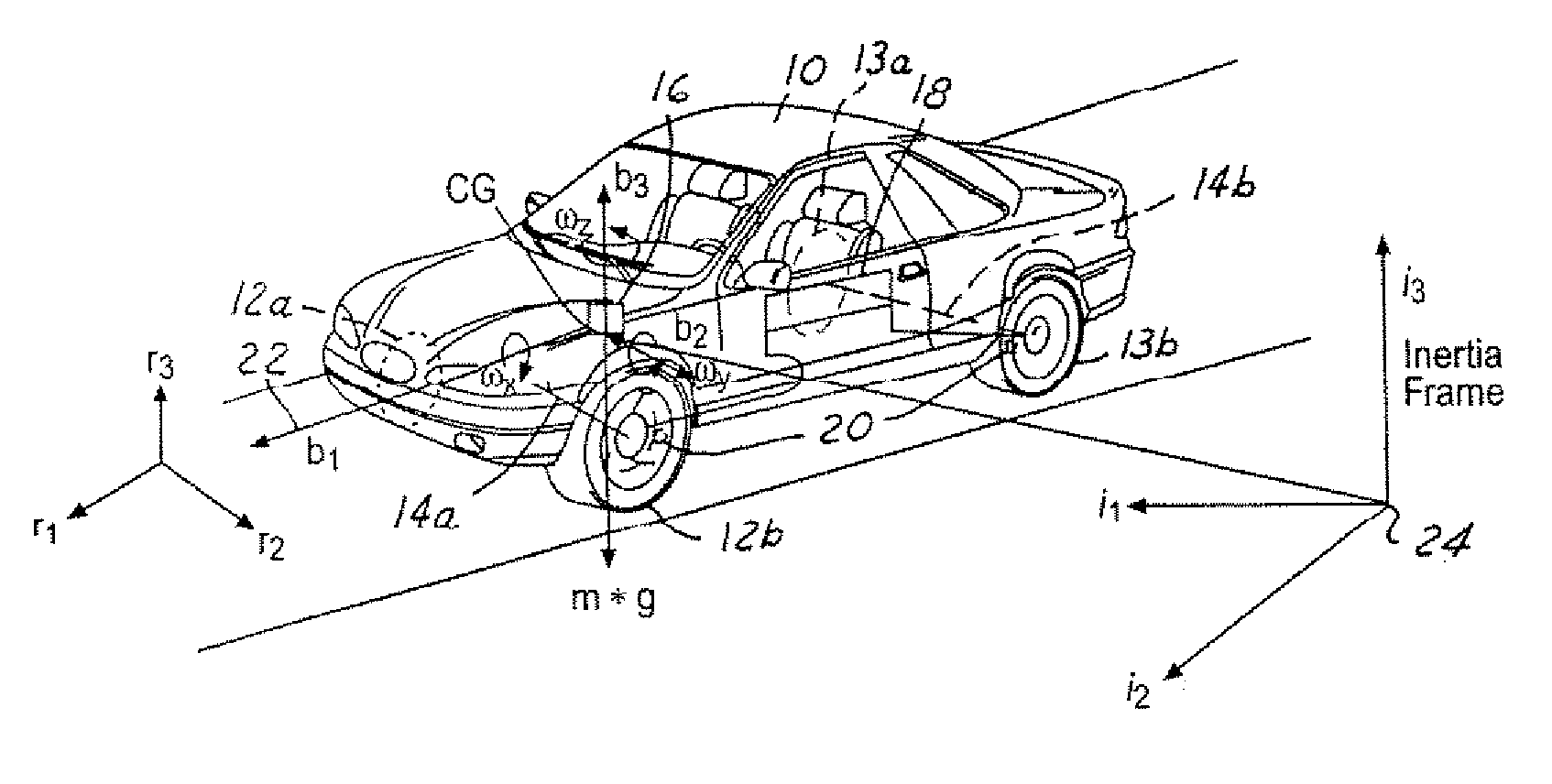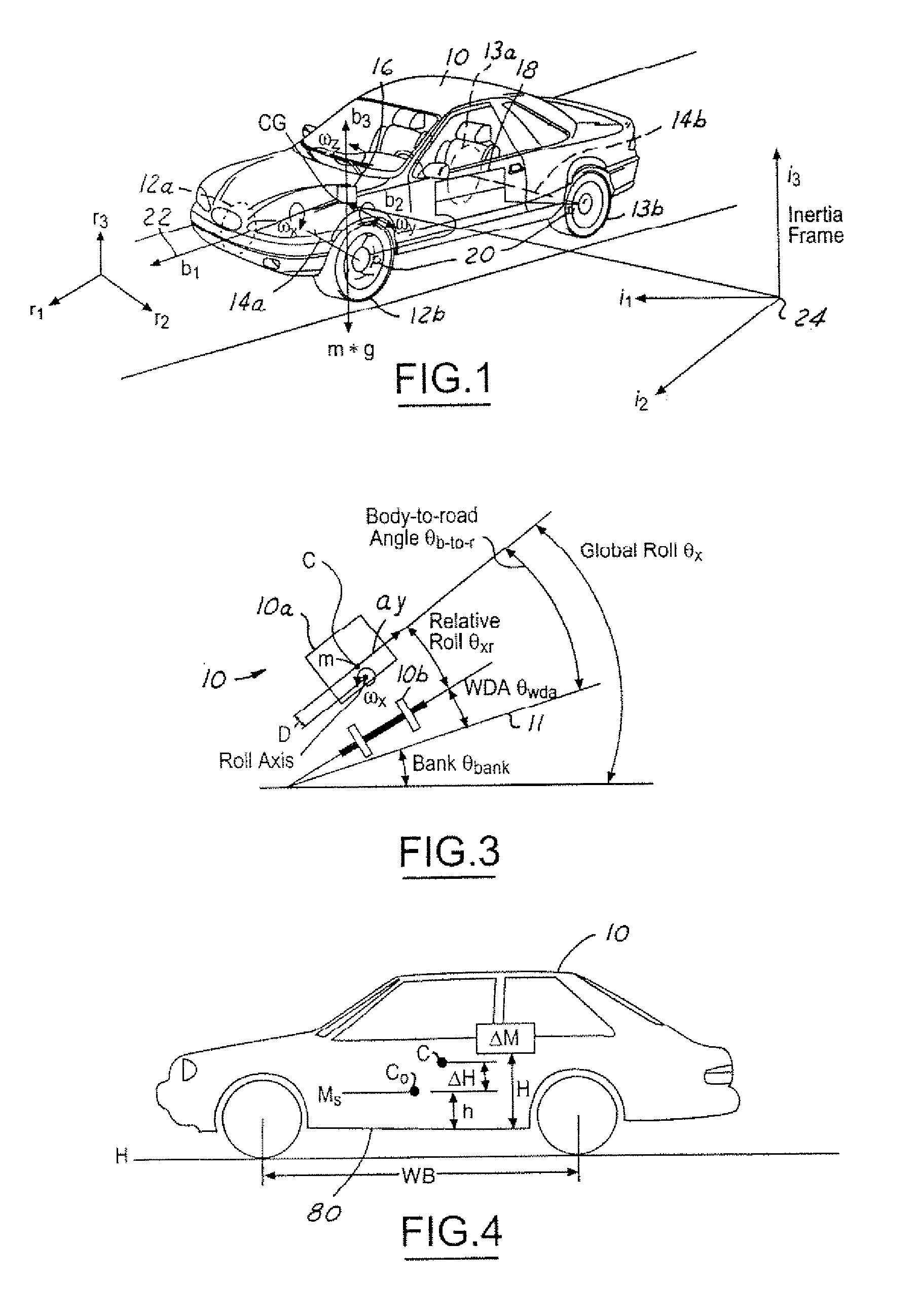Suspension irregularity detecting system
a suspension system and irregularity detection technology, applied in underwater vessels, non-deflectable wheel steering, special data processing applications, etc., can solve the problems of increasing the difficulty of safely cornering and braking a vehicle, reducing the contact between the road surface tires, etc., to achieve the desired ride comfort and handling performance level, reduce the amount of tire contact, and detect the
- Summary
- Abstract
- Description
- Claims
- Application Information
AI Technical Summary
Benefits of technology
Problems solved by technology
Method used
Image
Examples
Embodiment Construction
[0029] A vehicle suspension system is designed to support weight, absorbs and dampens shock and vibration of the vehicle body and the wheels, and helps maintain a good contact between the tire and the road surface. A vehicle suspension system consists of three components: springs, dampers, and anti-sway bars.
[0030] The suspension springs in the suspension system hold up the weight of the vehicle and help the vehicle body to resist the so-called pitch motion (front-to-rear angular motion) and roll motion (side-to-side angular motion) thereof. The suspension springs may be in the form of coil springs, leaf springs, or air springs and include torsion bars. The physical characterization of the suspension springs is their stiffness, which is the force per unit displacement of the suspenion height, that affects how the vehicle body responds while the vehicle is being driven on a road. For low stiffness springs, such as those used in luxury cars, the vehicle body does not easily respond t...
PUM
 Login to View More
Login to View More Abstract
Description
Claims
Application Information
 Login to View More
Login to View More - R&D
- Intellectual Property
- Life Sciences
- Materials
- Tech Scout
- Unparalleled Data Quality
- Higher Quality Content
- 60% Fewer Hallucinations
Browse by: Latest US Patents, China's latest patents, Technical Efficacy Thesaurus, Application Domain, Technology Topic, Popular Technical Reports.
© 2025 PatSnap. All rights reserved.Legal|Privacy policy|Modern Slavery Act Transparency Statement|Sitemap|About US| Contact US: help@patsnap.com



